DH98 Mosquito
Background
The history of the Mosquito is well enough known to dispense with a summary here. Many New Zealanders flew the type in RAF service. Best known of these are 487 (NZ) squadron.At the conclusion of World War II the NZ Government considered replacement strike aircraft and in-line with a policy for compatibility with the RAF, the Mosquito was chosen.
The RNZAF ordered 80 FB.6 aircraft to equip 3 squadrons in the immediate postwar period. These were 30 new and 50 reconditioned aircraft. The aircraft were prepared at RAF Pershore in Worcestershire and flown out to New Zealand. Crews were a mix of RAF and RNZAF personnel. Aircraft commenced arriving in New Zealand in January 1947, and due to various delays the last arrived on December 1, 1948. Four aircraft were lost during delivery HR375, PZ196, TA597, TE746), with the remainder being serialled NZ2321 to NZ2396. Four T.3 (NZ2301-NZ2304), and four T.43 (NZ2305-NZ2308) dual control ex-RAAF aircraft were purchased in 1946 and 1947 for pilot conversion. A further ex-RAAF aircraft A52-101, an FB.40 (NZ2320) was acquired following a landing accident at Ohakea - after being repaired the aircraft was sold to New Zealand. The order had allowed for a large percentage of attrition airframes (the RAF formula allowed for 37 aircraft over five years) but only 22 of the aircraft were actually used (by 14 and 75 SQNs). The remainder being placed in storage at Ohakea, Woodbourne, and Taieri.
Although three squadrons were planned (two Bomber Reconnaisance, and one Fighter Bomber), this did not come to pass. The main reason for this was a shortage of ground crew in the immediate post-war period. The bulk of the Mosquito's service was with 75 Squadron. The squadron was formed from 2 Squadron on October 11, 1946. The RAF had gifted the squadron number to the RNZAF in recognition of the work of 75 (NZ) Squadron. The squadron began to receive Mosquitos from November 1946. The role of the squadron included operational conversion, reconnaisance, interception, strike, and search and rescue. Training was carried out in all these roles with the Mosquito. Included in the strike training was the successful sinking of two redundant ships in Cooks Strait (one in 1950 and one in 1952). SAR training included dropping Lindholme rescue equipment. The training was successfully put to use on a number of occassions. The aircraft were flown as far afield as the Chatham Islands, and to an exercise in Fiji in 1950. The most unusual role was as film courier during the 1950 Empire Games (the forerunner of the Commonwealth games) which were held in Auckland.
14 Squadron also briefly operated the Mosquito. The squadron had been on occupation duties in Japan equipped with the Corsair. Reformed on January 24, 1949 as a fighter bomber squadron, the initial equipment was the Oxford. Three or four Mosquitos are believed to have been issued to the Squadron from April 1949. However in July the Squadron took over the multi-engine conversion role previously carried out by the the Advanced Flying School at Wigram. The intended re-equipping with Mosquitos was replaced by eight Oxfords.
The retirement of the Mosquito was announced on April 9, 1952. The replacement was the DH Vampire. The final flights were made at the end of the month. Four aircraft were flown to Woodbourne for storage on April 21, with two more the next day. NZ2306 had been undergoing an engine change and mde the final flight on April 24. A summary of the DH98 aircraft operated by the RNZAF can be found here.
During the Mosquito's service operational losses were:
- TE746 crashed into the Gulf of Carpentaria on March 26 1947 with the loss of both crew (W/C B.R. Hoare and F/O W. Colvin RAF). Wreckage was found at Sydney Island. It is believed that the crew flew into the sea while trying to identify their location after their radio went U/S.
- TA597 crashed on takeoff at Darwin on August 19, 1947. The pilot had abandoned takeoff when the airspeed indicator went U/S but over-ran the end of the runway and hit a stump. The aircraft was cannibilised by other ferry crews and the remains later sold.
- HR375 crashed into the Gulf of Cutch on August 27, 1947 with the loss of both crew (F/L R.B. Berney and F/L B.J. Beadle). The aircraft is believed to have flown into the sea while the crew avoided bad weather between Mauripur and Santa Cruz.
- PZ196 crashed on takeoff at Mingaladon, Burma on November 26, 1947. The aircraft suffered undercarriage damage on the takeoff run and swung off the runway when the starboard gear retracted. A fire then destroyed the aircraft.
- NZ2330 crashed into the sea off Himatangi Beach on August 27, 1948 with the loss of both crew (F/L G.R. Simich and F/S V.H. Baird). The aircraft was authorised for low flying, but struck the sea while recovering from a roll.
- NZ2337 was destroyed in a hangar fire on June 2, 1950. The fire started when during maintenance an inspection lamp fell in an oil drip tray.
- NZ2325 was written off in a landing accident at Ohakea on July 13, 1950. The aircraft landed heavily and ground-looped after bursting a tyre. The fuselage broke aft of the wing.
- NZ2329 was written off in a landing accident at Ohakea on September 18, 1950. The aircraft swung off the runway, but as it came back the undercarriage collapsed and the airframe was seriously damaged.
- NZ2335 was damaged by fire during 1950. No details available. It was not actually written off until September 22.
- NZ2331 crashed one mile north-east of Woodbourne on March 23, 1952 with the loss of both crew (F/O C.M. Waters and Sgt J.R. Campbell). The aircraft had been involved in a flying display on the day previously. While departing to return to Ohakea the aircraft made a low roll and struck a pine tree.
A number of aircraft were converted to instructional airframes. These included INST123 (NZ2350) and INST124 (NZ2351) at Hobsonville in Aug 1947, INST129 (NZ2396) at Ohakea in 1949, INST140 (NZ2394) at Hobsonville in June 1950, INST148 (NZ2326) at Hobsonville in March 1951, INST155 (NZ2323) INST156 (NZ2322), INST157 (NZ2324) and INST158 (NZ2338) at 4TTS Woodbourne in September 1952), and finally INST159 (NZ2368) also at Woodbourne. These aircraft were eventually broken up, or disposed of through the normal channels.
Disposal of the remaining aircraft began in February 1952. As the aircraft were declared surplus by the RNZAF they were put out to tender in batches by the Government Stores Board. Some aircraft were tendered several times. Some aircraft were purchased to melt down the engines and other metal fittings - the fuselage and wings being burnt or abandoned. A large batch were purchased by Aircraft Supplies Ltd of Palmerston North. Their intention was to sell the aircraft to a Californian corporation, ostensibly for aerial surveying. The Government suspected otherwise and cancelled the export after one aircraft (NZ2384/ZK-BCV) had left the country. The company went into liquidation in 1955.The last batch went to the Ansa Orchard Equipment Company of Upper Moutere in June 1956. Like many of the other aircraft, these were broken up for their wheels, hydraulics and other fittings which could be fitted into orchard and farm equipment.
Of the 89 aircraft purchased by the RNZAF 13 were written off or reduced to spares. Of the rest, only three went to new owners with the intention of preservation. Only one of these (NZ2336) was in fact preserved. The remainder of the survivors have been recovered from remains abandoned after useful items were scavenged. The RNZAF Mosquitos which survive are:
- NZ2305 The aircraft began life as an FB.40 serialled A52-19, but was converted while still on the construction line at De Havilland bankstown to a T.Mk.43 and re-serialled as A52-1053. Taken on charge by the RAAF on August 6 1946, the aircraft went into storage at 3 Aircraft depot at Archerfield, Qld. Sold to the RNZAF on December 18, 1946, it was delivered to Ohakea on April 2,1947 (by F/L R.K. Walker and F/L F.Whitely), and again went into storage. Sold to Mr Robin Coleman in May 1953 for 50 pounds, it was held on his farm on Galpins line near Marton. In 1967 the derelict aircraft was donated to MoTaT. My latest news on this aircraft is that MoTaT now have the aircraft wings which have been rebuilt by the RNZAF Museum, and re-assembly is a matter of time and space.
- NZ2308 Like NZ2305 above, this aircraft began life as an FB.40 serialled A52-20, but was converted while still on the construction line at De Havilland bankstown to a T.Mk.43 and re-serialled as A52-1054. It was delivered on June 13, 1947 by by F/L R.K. Walker and F/L F.Whitely. At the end of its RNZAF service this airframe had accumulated a little under 480 hours. From the last batch of aircraft declared surplus on June 30, 1955, it was sold through Government Stores Board tender No.6326 in November 1956 to ANSA Orchard Equipment Co, of Upper Moutere for scrap. It was then purchased by John Morgan of Riwaka. The remains of this aircraft are undergoing a radical rebuild by Glyn Powell in Auckland - he has built new fuselage moulds with the intention of producing a new aircraft incorporating metal parts from the original NZ2308 and other aircraft. An article (on the NZFPM site courtesy of NZ Wings) is located here .
- NZ2328 The aircraft was built by Standard Motors of Coventry as an FB.VI for the RAF Delivered to 19MU (St Athans) on August 26, 1945 it was serialled TE758. Sold to the RNZAF, it left RAF Pershore on March 6, 1947 (flown by F/L White RAF and W/O H.G. Rennie), and arrived in New Zealand on March 28. The aircraft served with 75SQN (where it was coded YC-C). It was put into storage at Woodbourne on April 22, 1952. Sold through Government Stores Board tender No.4981 in May 1953 possibly to Aircraft Supplies Ltd of Palmerston North. It went to Mr T.L Haymen, an M.P. of Oamaru for a museum, but was held on his farm. It was subsequently purchased by James Clark and the aircraft was moved to his farm at Totara near Oamaru. In 1972 the aircraft was moved to Christchurch. It is held by the Ferrymead Aeronautical Society (illustrated below) who are restoring the aircraft for static display.
- NZ2336 The aircraft was built by Standard Motors of Coventry in October 1945 as an FB.VI for the RAF. Serialled TE910, it was delivered to 27MU (Shawbury) on November 19 and put into storage. Sold to the RNZAF, it left RAF Pershore on December 19, 1946 (flown by Pennie and Dickinson, an RAF crew) and arrived in New Zealand on Apr 24, 1947 - where it was again stored. Activated to serve with 75SQN in 1951-52, the airframe amassed only eighty hours and thirty-five minutes. It was again put into storage at Woodbourne on April 22, 1952. The aircraft was sold (one of the final batch tendered in Government Stores Board tender No.6326) in November1956 to John Smith, who apart from cutting the aircraft for road transport has restored the aircraft as near as possible to original condition. Stored undercover for much of the time. this is the most complete RNZAF survivor. (illustrated below).
- NZ2355 The aircraft was built by Standard Motors of Coventry as an FB.VI for the RAF Delivered to 27MU (Shawbury) on October 22, 1945 it was serialled TE863. The aircraft served with the Empire Central Flying School at Hullavington from March 17 to May 9, 1947. Sold to the RNZAF, it left RAF Pershore on July 22, 1947 (flown by F/O Connors RAF and F/O W.J. Shannahan), and arrived in New Zealand on August 21. It was then put into storage at Woodbourne until disposal. Sold through Government Stores Board tender No.4981 in May 1953, possibly to Aircraft Supplies Ltd of Palmerston North. It went to Mr T.L Haymen an M.P. of Oamaru for a museum, and the remains of the aircraft later came into the possesion of Ted Packer. He amassed a large quantity of components for a restoration project, which were later passed to the RNZAF museum. The remains are stored by the RNZAF Museum, with the aim of being rebuilt to static display utilising components from a number of aircraft.
- NZ2382 The aircraft was built by Standard Motors of Coventry as an FB.VI for the RAF. Serialled HR339, the aircraft is a combat veteran, having served with 487 (New Zealand) SQN at Thorney Island and later with 16 SQN. Sold to the RNZAF, it left RAF Pershore on October 16, 1947 flown by F/L F.J Adams and F/O M.J. Fry. Delayed at Luqa, Malta while an unserviceable engine was replaced, it did not reach Ohakea until March 24, 1948 (flown by F/L Bailey RAF and W/O R.M. Cattermole). A taxying accident (due to ground subsidence) while on the way to Taieri for storage saw the aircraft grounded at Wigram. Sold by Government Stores Board tender No.4980 in May 1953, it was recovered from a farm at Pigeon Bay, Banks Peninsula by the Ferrymead Aeronautical Society. The aircraft remains with the Society and is being utilised with NZ2328 for a composite rebuild to static display.
- NZ2383 The aircraft was built by Standard Motors of Coventry as an FB.VI for the RAF and serialled RF597. The aircraft was delivered to New Zealand by P2 Polkowski RAF and F/O B. Cobcroft on March 24, 1948. At some point the aircraft was placed in storage at Taieri. Sold to Aircraft Supplies Ltd of Palmerston North through Government Stores Board tender No.4980 in July 1953, the aircraft was placed on the civil register as ZK-BCU on September 2. One of ten intended for sale overseas and six placed on the civil register, the export was prevented by the goverment. Today the aircraft remains only as components held by the RNZAF Museum.
Components of a further FB.6 remain (possibly in California) - NZ2384 was built as FB.VI PZ474 at Hatfield and delivered to 19MU (St Athans) on April 19, 1945. Issued to 80 OTU on May 5, the aiorcraft then went to 132 OTU (East Fortune) on June 13. The aircraft was subsequently stored at 15 MU from February 18, 1946 until it was sold to the RNZAF. After arrival in New Zealand on April 3, 1948 the aircraft was returned to storage. Sold to Aircraft Supplies Ltd of Palmerston North through Government Stores Board tender No.4980 in July 1953, and registered as ZK-BCV on September 2. It flew to California in February 1954 where it was intended for sale to Trans World Engineering Corp of Burbank. Registered as N9909F its subsequent operations are not on record, although it was used by the CIA in South America. Sold to the Insurance Finance Corporation of Studio City, it was based at Whiteman Park. There it slowly deteriorated, and the fuselage was eventually cut in half. Deregistered in 1970, some components and structures of the derelict aircraft were kept in storage with Jim Merizan. One report indicates the remains have now gone to Sweden.
Last Update:- 30 December, 2001
Technical Data
Details are for FB.6
- Accommodation : 2
- Dimensions
- Span : 16.52m (54'2ft)
- Length : 12.45m (40'10ft)
- Height : 5.3m (17'5ft)
- Weight
- empty : kg (lb)
- max : 10,000kg (22,000lb)
- Power Plant : 2x 1640hp RR Merlin
- Performance :
- max speed : 605km/h (378mph)
- max climb : 1,870ft/min (570m/min)
- ceiling : 26,000ft (7,925m)
- range : 1,800km (1,120miles)
Images
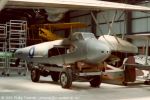

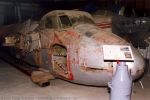
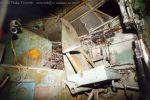
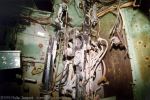
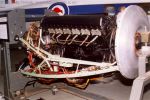
Close Up
Remember to let me know if you have a request for an image of a particular part of the aircraft. (but remember it might take awhile!)
The following images are of NZ2336 which is owned by John Smith of Mapua. Please note this aircraft is NOT on public display. I was fortunate in getting permission from Mr Smith (who is a very private individual) to photograph this aircraft. The aircraft is stored in a large shed (along with the rest of Mr Smith's collection), so access is difficult. A large amount of material is stored in the area adjacent to the Mosquito, which is why there are no pictures of the 'whole' aircraft.
Compare the condition of the cockpit with the un-restored examples above.
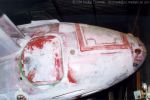
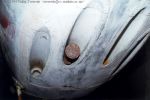
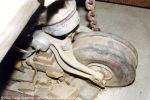
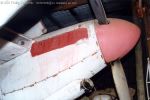

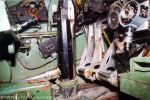
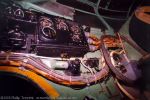



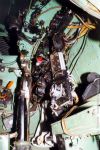
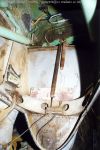

In response to requests I made another visit to Mr Smith on ? April 2000, and obtained further cockpit photos. These are shown below.

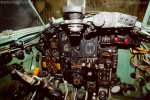
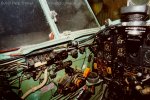

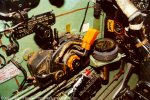
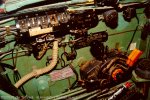
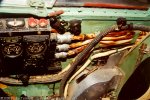

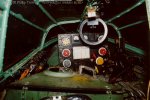
 © 1997-2001 Phillip Treweek, all rights reserved
© 1997-2001 Phillip Treweek, all rights reserved